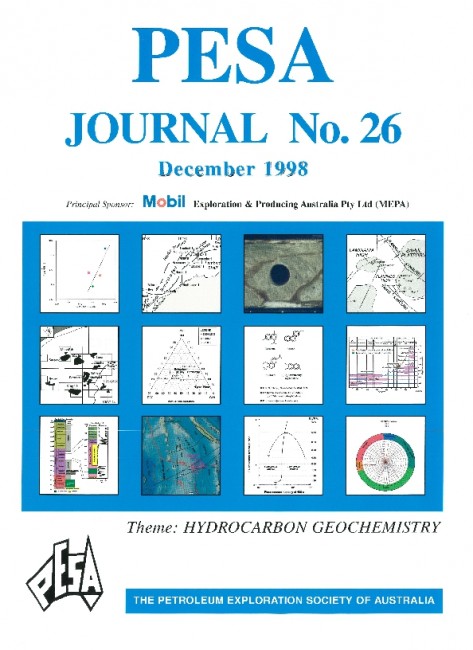Publication Name: PESA Journal No. 26
Authors: B.G.K. van Aarssen, R. Alexander and R.I. Kagi
Publication Volume: 26
Date Published: December 1998
Number of Pages: 9
Reference Type: Journal Article
Abstract:
Higher plants present at the time of deposition of near-shoremarine sediments leave a fingerprint in the form of chemical
fossils. This fingerprint reflects the changes in the floral
distribution on the hinterland through time as determined by
fluctuations in environmental conditions. Variations in this
higher plant fingerprint, as measured for three Middle to
Late Jurassic sequences from the North West Shelf, are
interpreted as evidence for a significant climate change
during the Oxfordian, which affected the whole North West
Shelf area. This climate change probably led to the
dominance of conifer-type trees. A modified higher plant
fingerprint - the higher plant parameter - was measured for
a combined set of samples from three wells in the Carnarvon
Basin, representing the complete Jurassic period. It shows
that the palaeoclimate in the Carnarvon Basin changed in a
cyclic fashion during the Jurassic, coinciding with secondorder
sea-level changes. The proposed changes in the
climate are in good agreement with geological data.
The climatic event in the Oxfordian is reflected in a very
similar manner in the higher plant fingerprints of the three
North West Shelf wells and can be used to con?elate
sedimentary sequences. Furthermore, as variations in the
distributions of higher-plant-derived biomarkers are
characteristic of the time of deposition, they can also be
used to determine the age of crude oils by measuring their
higher plant fingerprints.
This approach to biomarker geochemistry has applications
for petroleum exploration and offers considerable potential
for describing palaeoenvironments in more detail.


